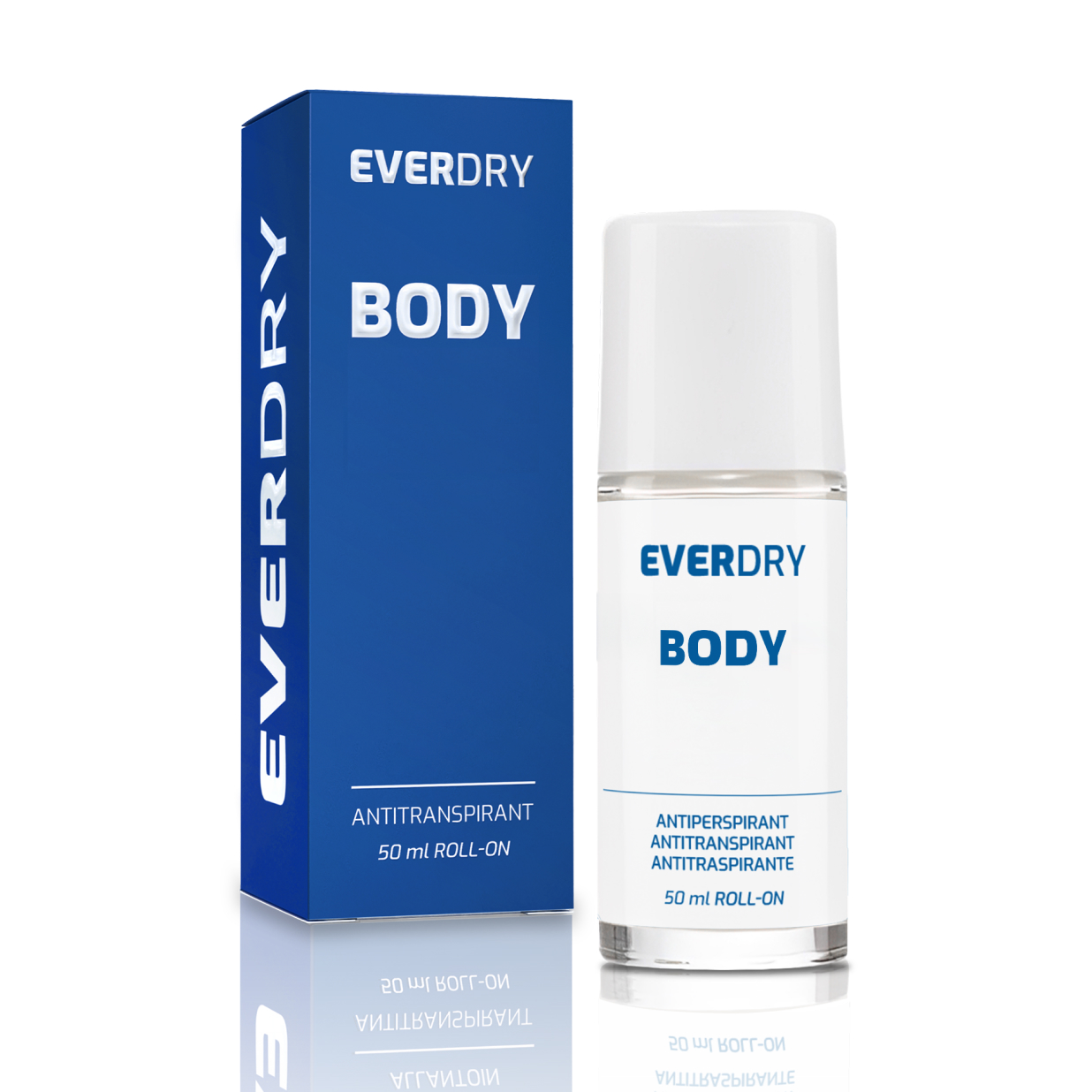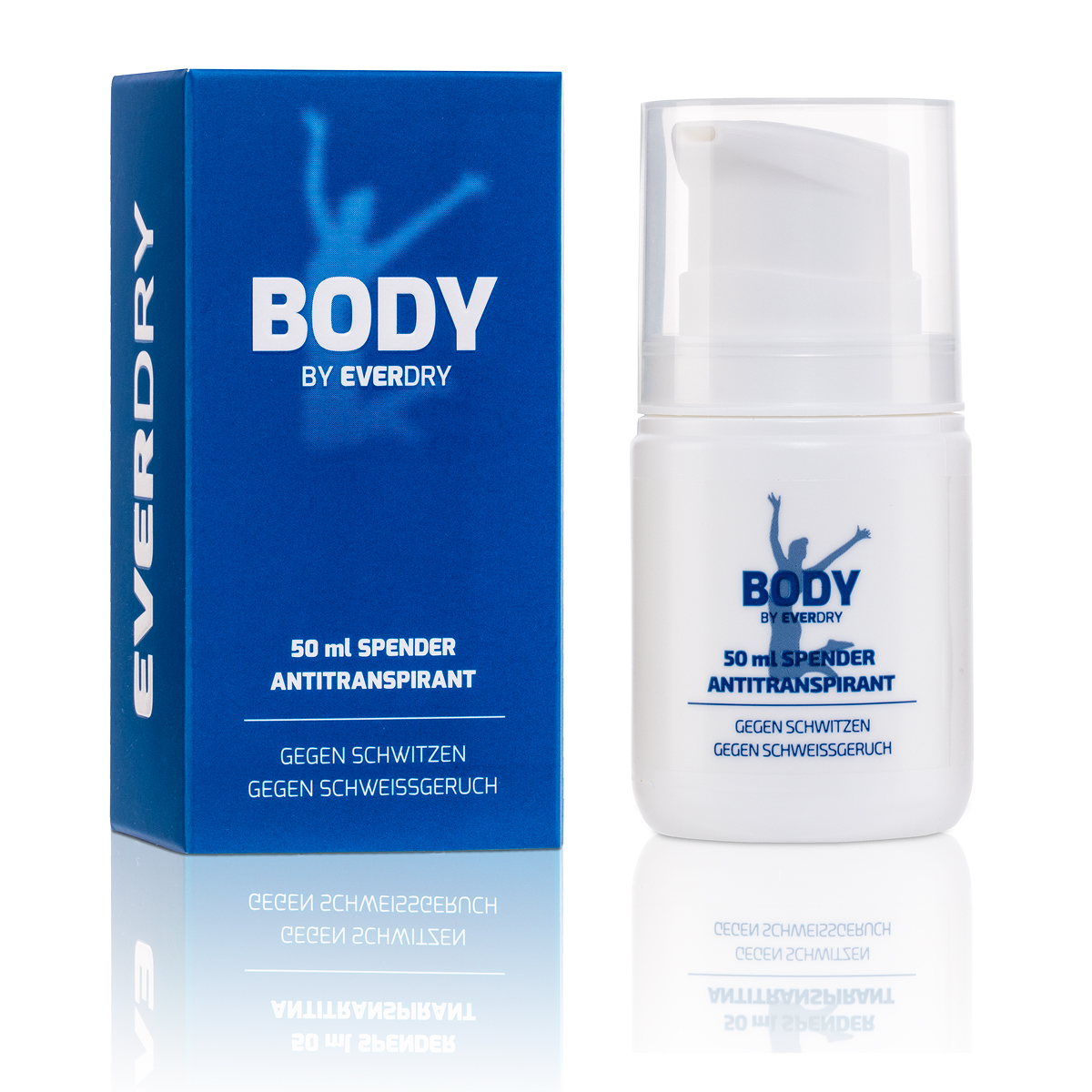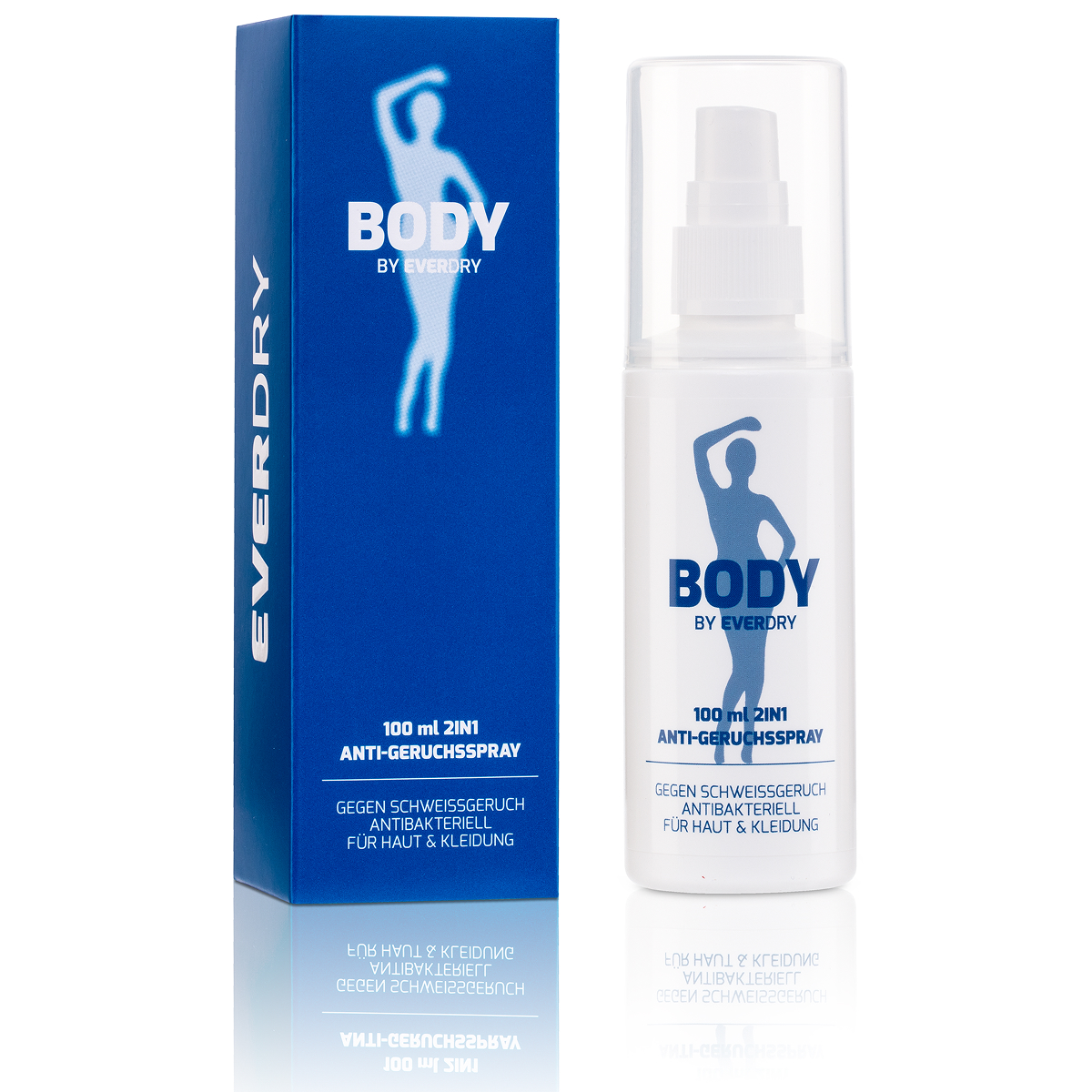Quick Summary: The Key Points
Sweaty Feet
This text looks at: Sweaty feet are a common issue caused by too much sweat being produced in the feet. Bacteria break down the sweat, leading to pongy odours. Dodgy footwear and not keeping your feet clean make the problem worse.
Sweaty feet are a real nuisance, so it's no wonder there are loads of names for them, like cheesy feet or stinky feet. Nearly a third of Germans complain about sweaty feet – and blokes are much more likely to get them than women. What might be brushed off as a bit of banter or something negative by colleagues, relatives and mates is a genuine problem for the person suffering. Just taking off your shoes can make you want to run for the hills. That's because most people think that sweaty feet are down to poor hygiene – but often, the embarrassing smell is actually caused by overactive sweat glands.
What causes niffing, wet feet?
On the soles of our feet, there are about 500 eccrine sweat glands per square centimetre. That's a lot of glands that can get to work. The eccrine sweat glands aren't there to cool your feet down with sweat, but – like the sweat glands on your palms – they help with grip.
Foot sweat on its own is bad enough, but when you add smelly feet to the mix, it's a right pain... The pong only starts when bacteria break down the sweat. Work boots, trainers or socks made of synthetic material stop your feet from breathing properly, creating a warm, damp environment where bacteria absolutely thrive.
Helpful tips for dealing with sweaty feet
So, what can you do about wet and smelly feet? Choosing the right socks and shoes is really important. On top of that, looking after your feet properly is key to effectively tackling sweaty feet. We've put together a few tips to help you keep your feet nice and dry:
1. Looking after your feet properly
If you've got problems with wet, sweaty feet, you're also more likely to get smelly feet and irritated skin. That's reason enough to make sure you look after your feet every day. And: clean, dry feet don't smell! A foot bath in the morning can help to freshen up your feet. Try adding some sage to your foot bath – the herb is known to help reduce sweating.
As well as sage, this foot soak is also said to be effective against sweaty feet: put 50 grams each of oak bark, thyme, walnut leaves and willow bark together with 20 grams of eucalyptus leaves and 3 litres of water in a pot and let it simmer for fifteen minutes. Let the liquid cool down to a lukewarm temperature and treat yourself and your feet to a relaxing soak.
Expert tip: Make sure you dry your feet really well, so that your toes and the bits in between are completely dry. Nice-smelling additions like sage don't just mask foot odour, they also have antibacterial properties and leave your feet feeling fresh.
A little foot care A to Z:
- Wash your feet morning and evening with an antiseptic soap. Make sure you wash not just the soles of your feet, but also between your toes.
- After washing, dry your feet and between your toes thoroughly to avoid a damp environment for your skin. If you can't be bothered with rubbing them dry, just use a hairdryer.
- Apply an antiperspirant containing aluminium chloride. This active ingredient reduces sweat production and therefore also the activity of bacteria. The more often you use an antiperspirant, the less your feet will sweat. You can also find handy antiperspirant foot wipes with an instant effect and panthenol for dry and well-cared-for feet.
- Even under your toenails, sweat and bacteria can build up and lead to a fungal infection. That's why regular cleaning and nail trimming are important here too. Always cut your toenails straight across to prevent them from growing into the sides.
- Treat your feet to a regular pedicure. Professional foot care involves removing excess hard skin, treating pressure points and pampering you with a foot massage.
2. Choosing the right footwear
Work boots, safety shoes, trainers, smart pumps – they all have their place, even if our feet don't always love them. That's because most shoes these days are made from materials that aren't very kind to skin, don't allow for heat exchange and encourage sweaty feet.
You can do quite a bit to avoid smelly feet just by being careful when you buy shoes and how you look after them:
- When buying shoes, pay attention to the material. Leather shoes are ideal because they're more breathable and stretchier than shoes made from synthetic materials. Not only should the upper material be leather, but also the insole, so that moisture is absorbed better. Modern high-tech fibres are also breathable, but they have the advantage over leather that they don't let moisture into the shoe. Whether it's natural or synthetic high-tech material: a good shoe costs a bit and is an investment in your foot health.
- Don't wear the same pair of shoes every day. Even shoes need a break so they can dry out and air. You can speed up the drying process with special shoe dryers.
- Regularly spray the inside of your shoes with deodorising and antibacterial shoe sprays. They reduce the growth of bacteria and leave a fresh scent.
- To avoid unpleasant foot odour, insoles with cinnamon, cedarwood, silver ions or copper fibres are a good idea. These natural materials not only deodorise but also fight bacteria at the same time.
- Change your socks every day, and more often if you need to. Go for socks made from natural materials and with silver threads. The silver ions in the threads are said to inhibit the growth of bacteria that break down sweat. If there are fewer bacteria, the unpleasant smell will also reduce. Avoid synthetic socks, as they're usually not very breathable and therefore encourage sweating and foot odour.
3. Giving your feet a break
When was the last time you felt grass or sand under the soles of your feet? Shoes off, socks off – it's time for your feet to relax.
We walk barefoot much less often today than we did 30 or 40 years ago. Even when it's 30 degrees in the shade, we wear trainers or plastic flip-flops. You hardly ever see kids running around barefoot these days either. But our feet aren't really designed to be squeezed into shoes and socks.
Walking barefoot is actually quite a sensory experience, because we also perceive our environment through the soles of our feet. We can feel tiny stones, warmth, cold, and soft or hard surfaces. When you walk barefoot, sweat is naturally removed from your feet by friction and air, the muscles in your feet and calves are strengthened – and that's exactly why you should leave your shoes and socks in the cupboard and let your feet breathe as often as possible.
I want warm feet but still don't want a damp foot climate?
When the outside temperatures drop, it can make our feet turn into blocks of ice. Freezing cold feet can ruin your whole day, and especially during the cold and flu season, it doesn't help with a strong immune system and feeling good. With a few simple tips, your feet will stay nice and warm and won't make you shiver.
It's getting cold outside – here's how to keep your feet toasty warm
Whether you're in the office, at the bus stop, at home or in bed – cold feet can be really unpleasant in winter. Lots of women especially suffer from this. Why do our feet get cold so quickly when the outside temperatures drop? It's actually quite simple: when we're cold, the body switches to a "survival mode" and first keeps the vital organs and the brain warm – hands and feet are right at the bottom of this list. Heat exchange is regulated by the blood. The vessels in the outer extremities narrow, and blood is diverted from the fingers and toes to the core of the body and the brain. This means that hands and feet also get cold quickly, and that's where we feel the chill. It's not yet fully understood scientifically why women get cold feet faster. It's thought that women produce less heat because they have less muscle and body mass on average.
The right footwear
A lined shoe with a thick sole is half the battle when it comes to stopping your feet from turning into ice blocks. It makes sense that your foot can retain more warmth when it's well wrapped up than in open pumps or thin trainers. A thick sole especially helps to keep dampness and cold from below at bay. It's also important that the shoes aren't too tight. In the space between your socks and the shoe, an air cushion forms, which acts as insulation. It also gives you room to wiggle your toes from time to time. This stimulates blood circulation and brings a bit of warmth back. If you like your shoes even cosier, you can also use insoles made of sheepskin, for example, to warm your feet.
Suitable socks in your shoes
The socks we put on our feet also play a really important role. Pure cotton socks can get damp from sweat and therefore cool your feet down even faster. Whether it's hot or cold outside, our feet sweat because that's where we have the most sweat glands per square centimetre. Functional socks are recommended because they absorb sweat and transport it outwards. Functional socks with a high proportion of merino wool also help with heat insulation because their crimped structure traps a lot of air. Furthermore, the special surface structure means there are fewer contact points between the material and the skin for extra insulation. Certain functional socks also have an antibacterial function, so you don't have to worry about taking off your shoes after a long day. Cheesy feet don't stand a chance. Always make sure that your socks aren't too tight, especially at the cuffs, as they could constrict your feet and negatively affect blood circulation.
Expert tip: Don't want to give up warm feet but are bothered by sweaty feet? Then we have a tip for you: use antiperspirants specifically for the feet, such as wipes that you can apply easily and directly to your feet. The wipes work instantly and provide long-lasting sweat-free feet.
Promoting blood circulation in the feet
Exercise, such as a winter walk, gets your circulation going and boosts heat circulation. Even a short brisk walk can do you a lot of good.
Regular sauna visits can also improve the circulation of the entire body, as the heat stimulates the whole body and the circulatory system.
Foot massages can also stimulate blood circulation and breathe new life into cold feet. Light massaging and kneading stimulates blood flow, and using a warming foot cream can enhance the effect. Alternatively, you can also massage your feet with a hedgehog ball to stimulate circulation.
Alternating hot and cold showers can be helpful in preventing cold feet. And if it's got so cold outside that the snow is lying, then you can also try "snow treading" for yourself. It probably takes a bit of courage to walk barefoot in the cold snow, but after a short trip, a pleasantly warm tingling sensation remains (Important: After snow treading, dry your feet thoroughly).
Do your feet some good with a warm foot bath or a massage, wrap yourself up warm and put your feet in the right footwear! Then you too can say goodbye to icy cold feet.
First published: 12.05.2011
Updated: 27.05.2025

Content: 0.05 Liter (€398.00 / 1 Liter)

Content: 0.05 Liter (€398.00 / 1 Liter)



